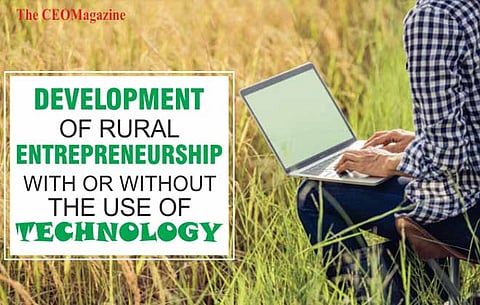
- News
- Women
- Magazine
- IndustryIndustry
- InsightsInsights
- Success Stories
- PublishPublish
- ContactContact
- Media KitMedia Kit

From telecommunication to electronic machines, well, technology has been developing the solutions to all the traditional problems that existed earlier. Now, every country has its challenges besides the global challenges and while the developed countries have technology solve their core problems. In India, a developing country where the majority of the GDP is dependent on agriculture, the core idea of technology and innovation i.e. efficiency and higher productivity is focused on.
Initiated in 1979 with a vision to address challenges facing rural communities by developing and disseminating appropriate technologies and capacity building, CRDT has today become a multidisciplinary centre driven by young as well as experienced faculty working in diverse areas inclusive of:
Sustainable Biomass Production and Utilization
Food Processing, Safety and Quality
Sustainable Habitat and Green Solutions
Rural Energy Systems, Environment and Climate Change, Water, Sanitation and Waste Management in Rural areas
Rural Planning and Entrepreneurship Development, Bio-economy and Panchgavya
To ensure the listed endeavours' success, CRDT works in collaboration with several international institutions to promote and propagate sustainable technologies for the rural sector. Being an authority with responsibility, they as the Centre has identified and addressed the current and burning issues directly from the grassroots level as an agenda for research and technology development.
What they do after this acknowledgement is to work on the R&D efforts at CRDT that are supported by a large pool of doctoral researchers working on a wide range of issues as well as a large number of sponsored R&D and consultancy projects.
They emphasize on using social entrepreneurship as a mechanism for creating impact in several areas and does leading and coordinating pan-India initiatives such as the UBA. CRDT extends a warm welcome to students as well as prospective faculty members who are passionate about impact-oriented research for empowerment and development of rural communities.
IT and Communications Technology: Computers are used on a wide scale especially during research in a particular area along with internet as one of the most comprehensive and appropriate areas to find out information regarding any area, topic, subject or problem.
Construction: With examples like rammed earth, dutch brick, and cob, the generally available and inexpensive construction materials make the houses and the buildings strong, adaptable to all the environmental conditions and well-built.
Energy: Today, the need for energy in spaces in covered with solar cells, wind power or micro, hydro, with energy stored in batteries. Biobutanol, biodiesel, biogas and vegetable oil.
Cooking: With technology, the cooking that used to traditionally be development on smoke-based fuels has today been shifted on to stoves that are smokeless and wood conserving lead to greater efficiency, saves time and labour, reduced deforestation and significant health benefits.
Health care: Something that the rural areas focus on today is the establishment of health centres, provision of medical facilities, health benefits, there is the usage of science and technology. With the help of technological factors and advancement in the field of science, medicines and innovative machines are coming into existence in hospitals and health care centres in rural areas.
Follow us on Google News
